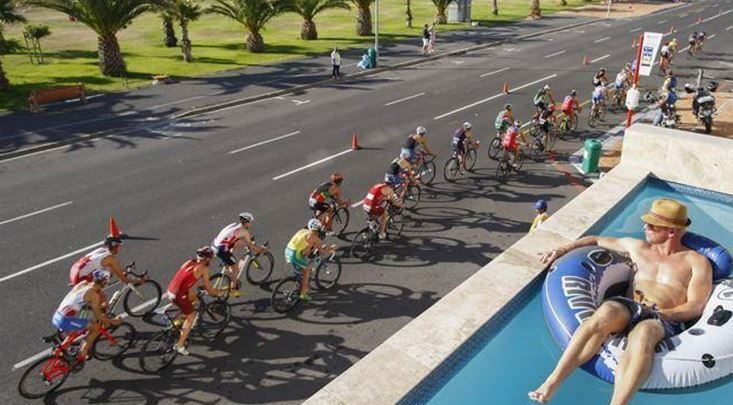The set-up or tapering to compete in triathlon
Tapering is defined as a reduction of training load over a period of time to optimize performance

If you have heard about tapering or tapering but you do not have a clear idea of what it implies, from today you will be able to understand it and apply it for your workouts.
Following expert authors from the training area such as Mujika and Padilla (2003), the tapering or tuning one defines reduction of training load over a period of time, Which aims to reduce physiological stress y psychological of daily training and optimise the performance.
For this, several experts of the area advise maintain training intensity, reduce the volume (in a range between 60 and 90%) and reduce the frequency of training (no more than 20%).
The tapering period is very variable, ranging from 4 days to 4 weeks (Mujika and Padilla, 2003).

Applying tapering to triathletes we have the following recommendations (Mujika, 2011):
- La intensity of training should keep during the tapering period
- El costumes of training (kilometers) is very important for this phase, advising reduction of 40 to 60% in relation to the volume of the phase before the set-up.
- La frequency Training (number sessions) is related to the volume, so that depending on the reduction of the previous one, the frequency will be decreased.
- The type of tapering are four: linear, exponential with slow or fast decrease and step. However, it has been proven that the pattern exponential with rapid decline It is more beneficial for improving performance in cycling and running. This means moving from 90% of the volume to 40% in only 5 days or to 20% in 15 days.
- La duration of the tapering period is very variable, as we have already mentioned, it is mainly conditioned by the volume and intensity of the previous training phase, so that previous periods with high volumes and intensities will require longer tapering periods. In any case, it is advisable to carry out at least a week of tapering.
In addition, during the tapering period you must pay special attention to the invisible training, ie the recuperación, eating e hydration, dream, rest and physiotherapy.
These aspects, together with the reduction of stress by training, will help your body arrive in the best conditions of recovery and assimilation of training charges to compete.
References
Mujika I, Padilla S. (2003). Scientific bases for precompetition tapering strategies. Medicine Sciences of Sports Exercise. 35 (7): 1182-7.
Mujika (2011). Tapering for triathlon competition. Journal of Human Sport and Exercise 6: 264-270
Laura García Cervantes
Dra. Science of Physical Activity and Sport
Technical Director Club Trikatlón Tres Cantos
Triathlon and Swimming Senior Trainer
Paratriathlon Specialist Trainer
There are no previous results.




























